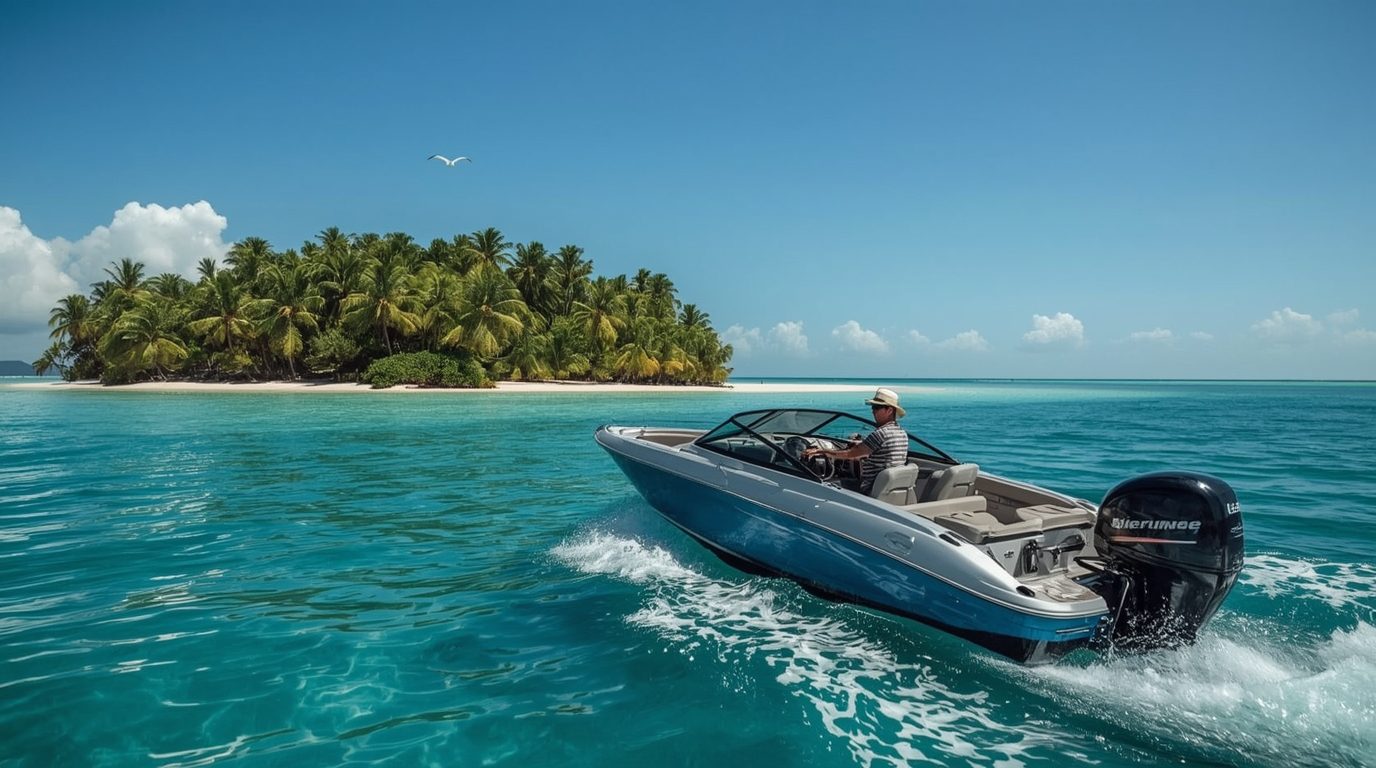Bayada Island: Saudi Arabia’s Next Eco-Tourism Gem
Just a short boat ride from Jeddah, Bayada Island is becoming Saudi Arabia’s newest eco-tourism treasure. The island is ringed by powdery white beaches and the transparent blue of the Red Sea. Below the waves, colorful coral gardens burst with life. The blend of quiet beaches and active adventures is the kind of getaway today’s travelers want, and Bayada delivers. As more people look for places that are beautiful and good for the planet, the island is ready to welcome both Saudi worthies and guests from far away.
A Pure Natural Paradise
Bayada Island stretches about 700 meters and is framed by gentle, shallow water that is only about four meters deep. The quiet beach and wide, open sea make you feel like you are a world away from the noise of the city. Because the island is mostly untouched, its original beauty is still here, from the powdery sand underfoot to the endless sky overhead. There are no loud hotels or crowded bars, just the sound of waves and the sight of the stars at night. This is a getaway that invites you to unplug and breathe deep.
The waters around Bayada Island are a treasure chest of life. Coral reefs burst with color, home to schools of shimmering fish and a parade of other sea creatures, turning every snorkel and dive into an underwater festival. Kayakers glide through glassy lagoons, while swimmers and watersports fans drift in the calm, clear waves. With so much sea life on display, Bayada Island becomes more than just a pretty spot—it’s a classroom for eco-tourism, teaching guests how to marvel at the Red Sea’s fragile beauty without harming it.
Adventures That Care for the Ocean
Island tourism teams are rolling out fresh, green ideas to keep nature and travelers happy. On a typical six-hour day trip, guests meet the sea’s wonders through guided snorkeling, gentle boat rides, and custom water sports, all without leaving a big mark on the environment. Guides choose routes and activities that protect coral and fish, showing visitors how to admire the ecosystem while keeping it safe for the next wave of explorers.
When you visit, you can dive right into thrill and learning at the same time. Friendly guides share why the reefs matter, how local fish behave, and why we should protect the ocean. You can paddleboard, kayak, or even try gentle water skiing, all done in a way that cares for the reef. Whether you’re traveling with family or solo, Bayada Island gives you a rare chance to have fun and help the planet at the same time.
Keeping Bayada Island Safe for the Future
The Saudi Red Sea Authority has decided that keeping Bayada Island safe comes first. They use the latest tech to watch over the coral, test the water, and count the creatures living here. Thanks to these smart steps, even as more guests arrive, the fragile ecosystems that make the island so special stay healthy and strong.
Conservation programs on Bayada Island keep visitor numbers low, restrict entry to fragile areas, and use green technology like solar power and smart waste systems. This careful approach to tourism lets Bayada show off its beauty without damaging it, making it a shining example of how to develop coastal tourism responsibly. The island proves that we can share spectacular places with travelers today and still protect them for the travelers of tomorrow.
Community involvement powers the island’s eco-tourism plan. Local guides, divers, and boat operators take part in training sessions on protection practices, turning their knowledge into steady jobs. Tourists are invited to help, signing up for reef clean-ups and joining educational workshops that deepen their respect for the natural world. This hands-on involvement encourages travelers to act thoughtfully, making every visit a step toward lasting care for the island’s fragile ecosystem.
The Perfect Escape for Adventure and Relaxation
Bayada Island welcomes all kinds of travelers. Adventure lovers can plunge into colorful coral reefs, kayak, windsurf, or paddle to secret beach nooks. Those after peace can stretch out on soft white sand, listen to gentle waves, or meditate with a sunset view as their only companion. This mix of action and calm makes the island a true all-in-one getaway.
Easily reachable, Bayada Island keeps pulling in more visitors. A quick boat ride from Jeddah means you can hop over for a morning and still have time for a sunset, or you can kick back for a whole week. Combine your stay here with a cultural day in Jeddah. Wander the Old Town of Al-Balad, haggle for spices in the souks, and check out the latest in art galleries. Nature and city life blend perfectly, adding extra flavor to your trip.
Bayada Island and Saudi Arabia’s Tourism Vision
Bayada Island plays an important role in Saudi Arabia’s efforts to diversify tourism and spotlight the country’s stunning natural and cultural treasures. Programs like the Red Sea Project and Vision 2030 are funding sustainable resorts and attractions that draw worldwide visitors while protecting delicate ecosystems. Bayada Island shows that eco-friendly travel can thrive alongside conservation and cultural respect.
With its emphasis on sustainability, adventure, and hands-on learning, the island is designed for travelers who want unforgettable moments without harming the planet. Bayada Island helps shape Saudi Arabia’s image as an advanced eco-tourism destination and highlights the Red Sea’s extraordinary underwater life.
Future Outlook
As word spreads about Bayada Island, more visitors are likely to add it to their travel plans. Responsible tourism will stay at the center of the island’s development, ensuring that more guests do not spoil its natural charm. Strong partnerships between environmental agencies, guides, and the local population will be essential for keeping Bayada Island a clean, beautiful, and welcoming place.
Bayada Island is thriving, and so is the wider Red Sea region, where eco-tourism is fast becoming the heartbeat of both economic progress and environmental care. The island shows that tourism can educate, celebrate, and protect nature all at the same time, creating a successful model for other places to follow.
The Bottom Line
Bayada Island is not just another postcard-perfect beach; it is living proof of Saudi Arabia’s pledge to travel that respects the planet. With its powdery beaches, glowing coral gardens, and eco-friendly tours, the island crafts a perfect mix of chill time, thrill time, and planet-friendly choices. Guests can dive into the underwater world, paddle a kayak, or simply lounge under a palm, all while knowing their visit helps shield the very treasures they love.
For those who crave a slice of nature that is wild, adventurous, and sustainable, Bayada Island is the Red Sea’s rising eco-tourism jewel. It opens the door to Saudi Arabia’s untouched coastal beauty and allows every traveler to pitch in and protect it for the kids who will visit tomorrow. Bayada Island is more than a stop on the map; it is a step toward a brighter, greener way to travel.
Broader Regional and Economic Impact Analysis
Understanding the bigger picture is key when you look at how changes in one market ripple out. These changes don’t just hurt or help the immediate industry; they affect employment, trade, and even local culture in broader regions. So, when we dig into the possible outcomes of a policy or a market trend, we look beyond the charts and graphs.
Regional Employment Trends
When a key employer lays off workers or a new factory opens, you don’t just lose a paycheck or gain a salary. Surrounding businesses feel it; coffee shops, dry cleaners, and schools all see a drop or rise in daily visitors. We track these shifts by using employment maps and surveys that reflect how each job is woven into the community fabric. By spotting at-risk areas early, local leaders can roll out targeted training programs or safety nets that help the most affected workers.
Cross-Border Trade Links
Many regions depend on supply chains that cross state or even national borders. A new tariff or a natural disaster that disrupts a port can delay shipments and inflate costs. We model these flows graphically and through trade databases, showing policymakers where to expect price spikes and where they should prioritize temporary support. This keeps the overall economy humming instead of letting one shock spiral into many.
Regional Economic Ecosystems
Finally, we can’t forget the softer yet real shifts that market changes can ignite. A boom in solar panel manufacturing, for example, can spark a wave of new educational programs, a surge in specialized law firms, and a renewed sense of regional identity. Long after the boom itself, the skills, networks, and story the community tells itself can guide future growth paths. By tracking grants, enrollments, and cultural events, we help regions spot this emerging ecosystem and decide which pieces to nurture most.
Together, these layers of analysis help leaders craft smarter, quicker responses that buffer people, businesses, and communities from shocks, while also nudging them into new, sustainable growth areas.




